A buddy of mine—let’s call him “Gadget-Guy”—proudly waved a ₱299 power bank at our barkada hangout. “20,000 mAh, bro! I can charge my phone all week,” he bragged. By midnight his phone was still crawling at 8 percent, and the mystery brick felt hotter than fresh turon. That one scene summed up why power-bank myths spread faster than trending TikTok dances: half-truths, clever marketing, and a dash of wishful thinking.
Ready to separate science from sidewalk chatter? Let’s bust the biggest misconceptions—no scare tactics, just practical facts you can use the next time you’re tempted by a flash-sale bargain.

Editor
Lloyd Kelly Miralles chevron_right
Table of Contents
Myth 1: “Higher mAh Always Means More Charges”
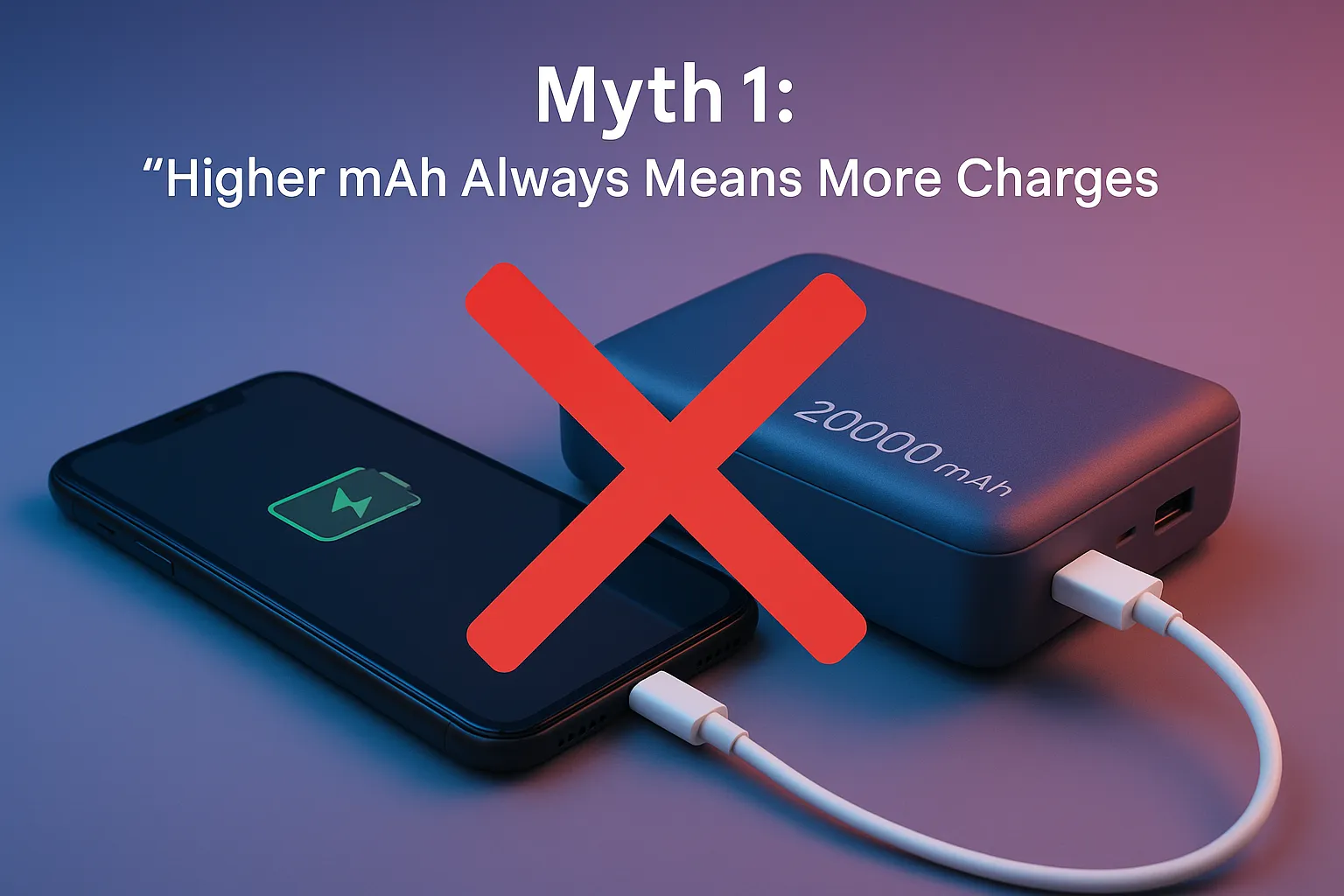
The story: If Brand A prints “30 000 mAh” and Brand B says “10 000 mAh,” the first one should give triple the juice, right?
The reality: Manufacturers quote capacity at the battery’s internal voltage (about 3.7 V). Your phone drinks power at 5 V or more. The step-up conversion plus heat loss eats roughly 25 % of that printed figure. Two power banks claiming the same mAh can hold wildly different true energy if one uses better cells or a higher internal voltage.
Quick gut check: Divide the mAh by 27 to see watt-hours (Wh). An honest 20 000 mAh unit ≈ 74 Wh. Anything smaller dressed up as “20 000 mAh” is a red flag.
Myth 2: “Power Banks Ruin Your Phone Battery”
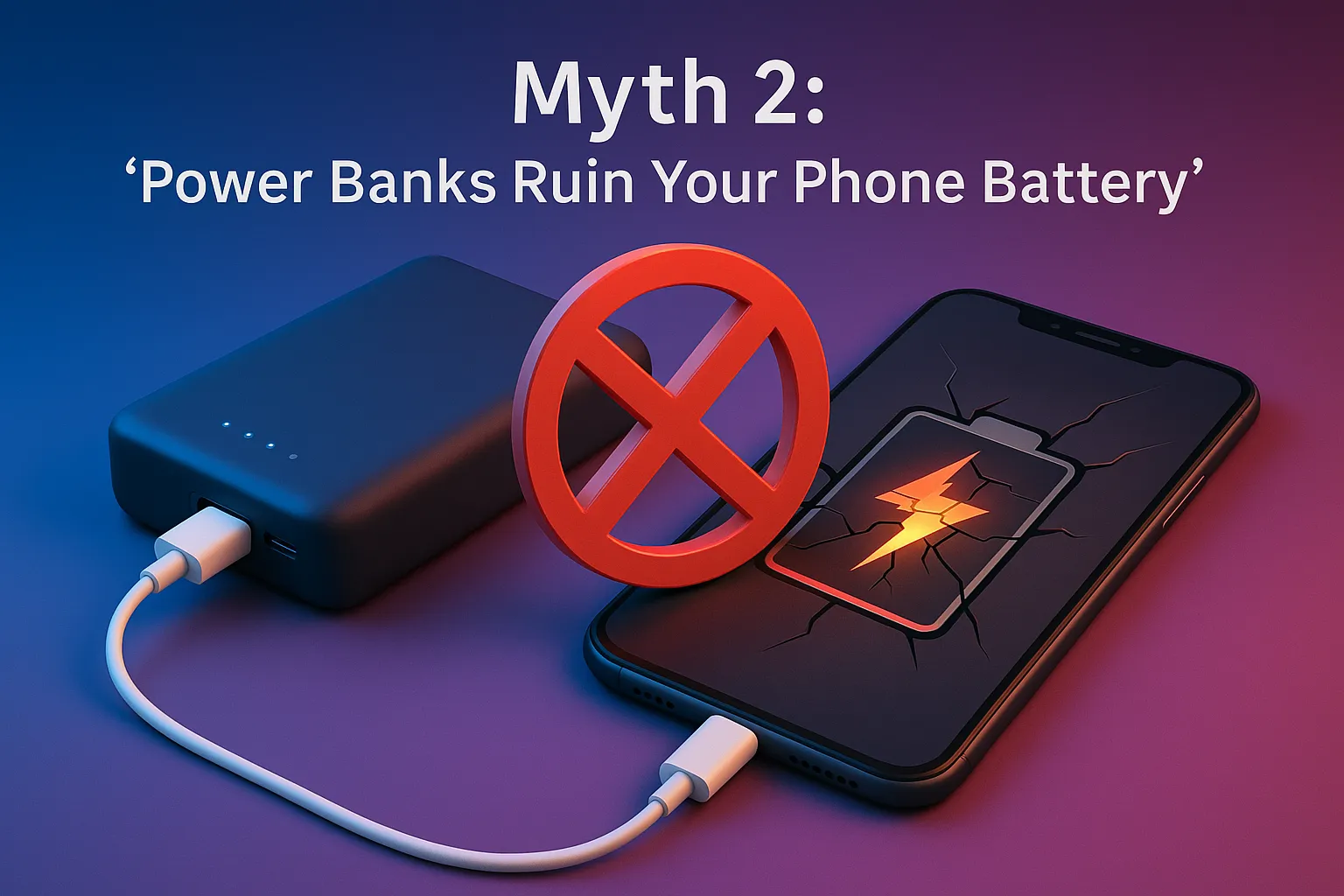
The story: Charging from a portable bank shortens your phone’s life because the current is “dirty.”
The reality: Lithium-ion batteries care about voltage stability and temperature, not the passport of the power source. Certified banks use the same DC regulation as wall chargers. Problems pop up only with knock-offs that skip safety ICs—over-voltage spikes, zero temperature cut-off, you name it. Stick to units with proper certifications (CE, FCC, RoHS) and you’re as safe as you are on a branded wall brick.
Myth 3: “Leaving a Power Bank Plugged In Overnight = Guaranteed Explosion”

The story: An auntie forwards a Facebook post of a charred bedroom, warning that charging beyond 100 % makes batteries “over-inflate and explode.”
The reality: Modern power banks use smart charging chips that cut input once the cells reach 4.2 V per cell. They’ll trickle if voltage dips, but they won’t keep pumping current like an overenthusiastic water tank. Still, best practice is to charge on a hard surface (not under pillows) so heat can dissipate, especially in Philippine humidity.
Myth 4: “Fast-Charging Ports Will ‘Overload’ a Regular Phone”
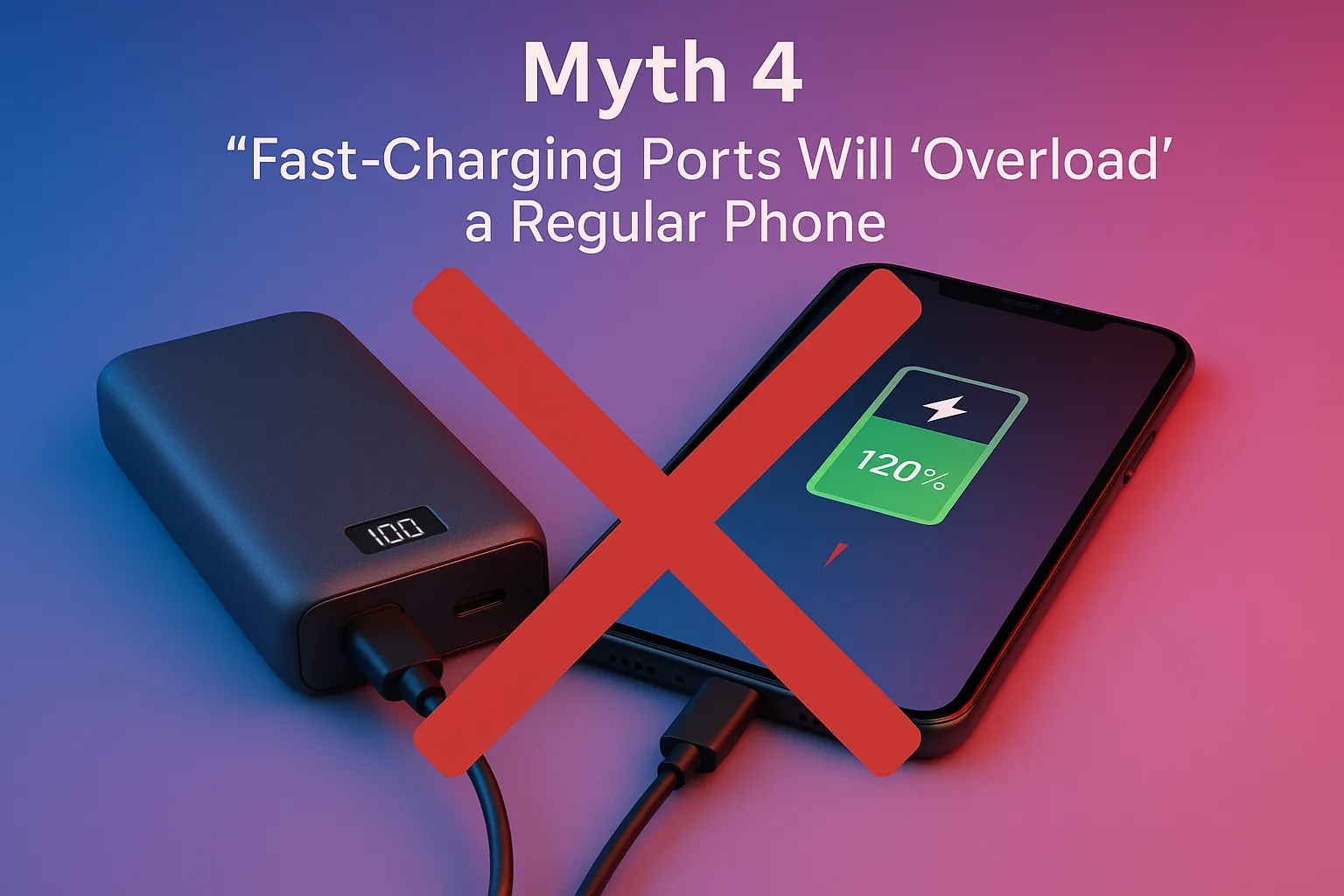
The story: If you plug a budget phone into a 100 W USB-C port, it will overheat or get zapped.
The reality: Fast-charge protocols are handshake systems. Your phone asks: “Can I have 9 V at 2 A?” The power bank either says “Sure” or offers the default 5 V at 2 A. If the device doesn’t request extra volts, the bank won’t push them. So your three-year-old handset will sip leisurely, no matter how beefy the port sounds on the box.
Myth 5: “Any USB-C Cable Works for Any Wattage”
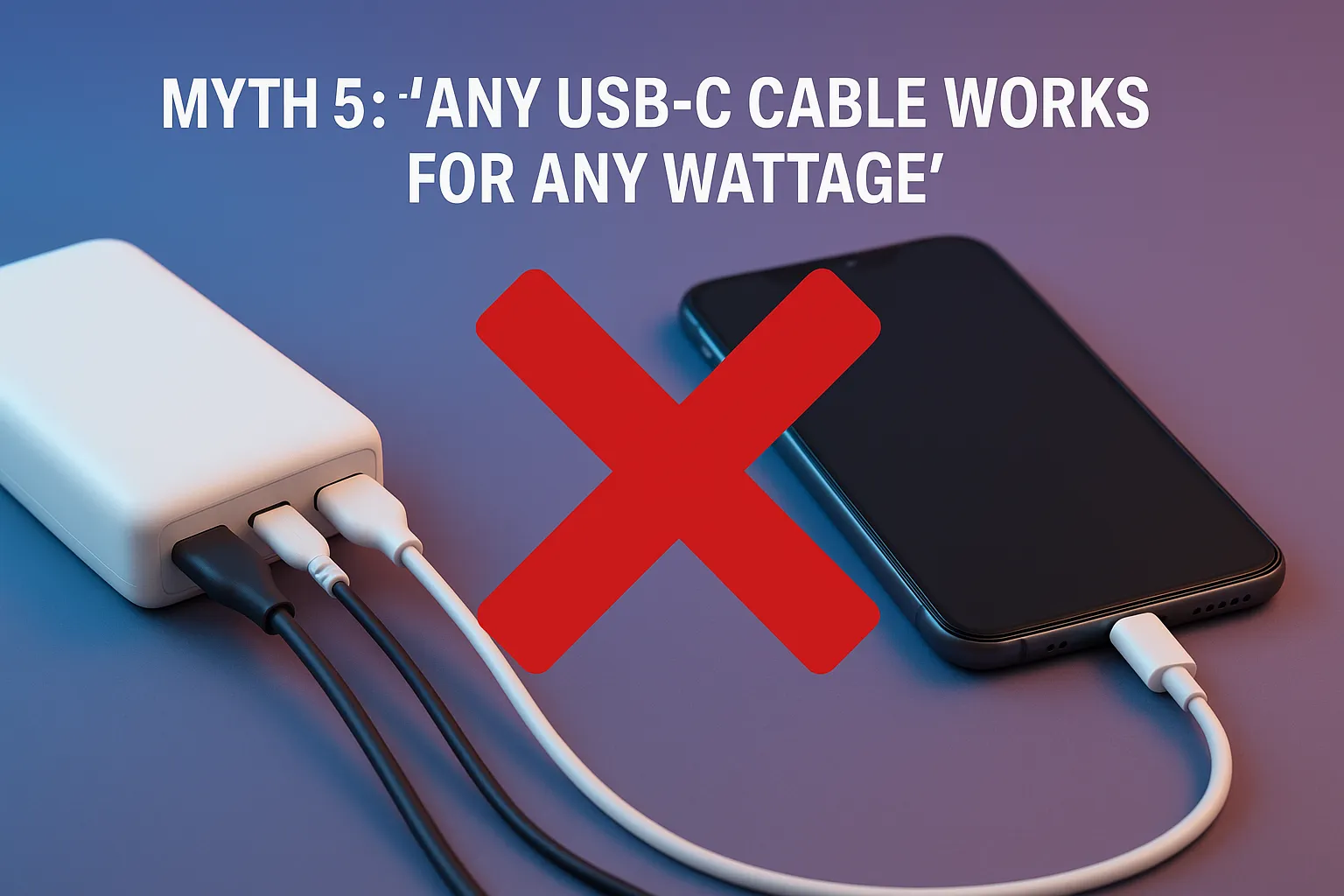
The story: A cable is a cable; wattage is about the power bank, not the wire.
The reality: Above 60 W, USB-C cables need an e-marker chip to signal they can safely carry up to 100 W or 240 W. Plug a cheap, unmarked ₱50 cable into a 140 W PD bank and the bank will throttle—or worse, the cable will throttle for you by melting. Look for “100 W PD” or “e-marked” on the label.
Myth 6: “Solar Power Banks Fully Recharge in a Few Hours of Sun”

The story: A palm-sized solar panel promises endless off-grid power on your next beach trip.
The reality: Most clip-on panels max out around 1 W under perfect noon sun. On a 20 000 mAh bank (~74 Wh), that’s three full days of cloud-free charging. Treat built-in panels as emergency trickle top-ups, not true recharge solutions. Serious solar rigs use fold-out 10 W–40 W panels bigger than a clipboard.
Myth 7: “Power Banks with More Ports = Full Speed on Every Port”

The story: If a bank has three USB-C outputs marked 65 W, all three can pump 65 W simultaneously.
The reality: Specs often quote maximum per-port or total shared wattage—rarely both. A “65 W” unit might split into 45 W + 20 W once two devices connect. Check the fine-print table (usually buried on the back), or open the manual PDF before buying.
Myth 8: “Pass-Through Charging Is Dangerous for Your Devices”
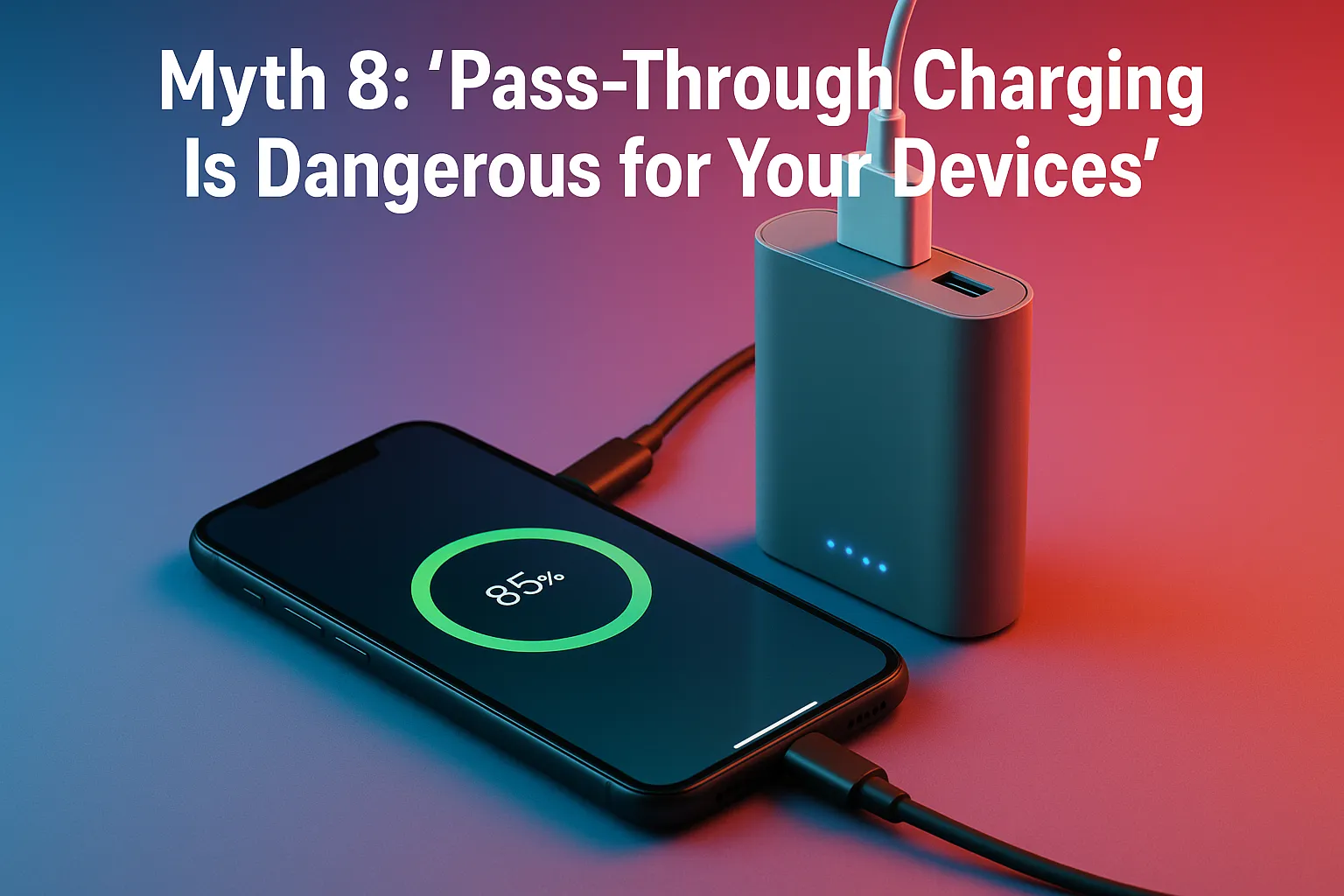
The story: Charging your phone while the power bank itself is plugged in stresses both batteries.
The reality: Quality banks manage incoming and outgoing power via separate circuits, limiting heat. Pass-through is safe if the feature is officially supported. The caveat? It usually throttles speed; think of it as “overnight convenience,” not “rapid refuel while rushing out the door.”
Myth 9: “Cheaper Cells Are Just as Good; Brands Just Mark-Up for Name Value”
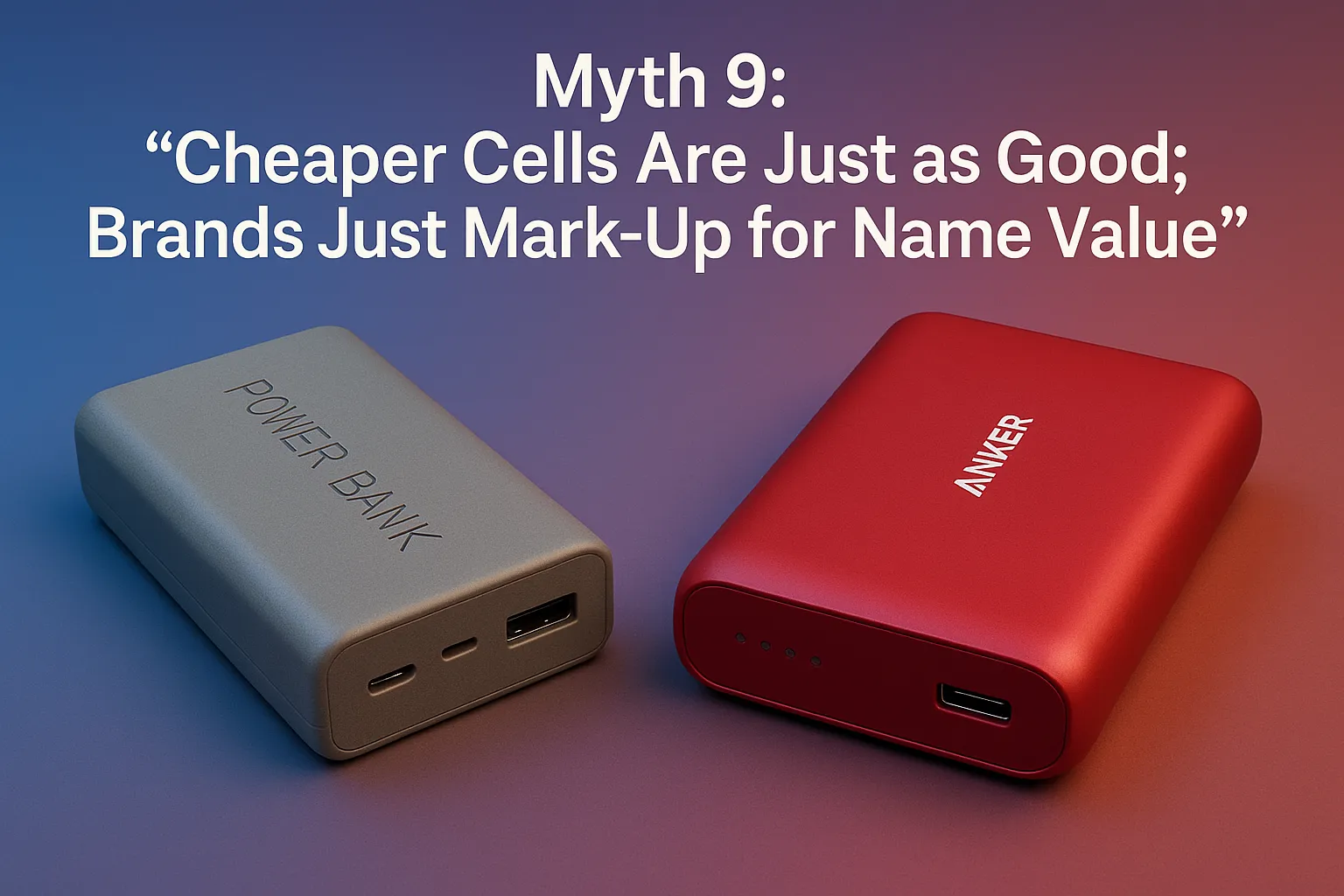
The story: Inside, all batteries are made in the same Chinese factory, so why pay extra?
The reality: Cell quality, BMS (battery-management system) firmware, and after-sale support make the difference between 500 safe cycles and a swollen pack after month four. Reputable brands grade their cells, reject duds, and update firmware if faults emerge. That overhead—not just marketing—explains the price jump from ₱400 to ₱1 400.
Myth 10: “Storing a Power Bank in the Freezer Boosts Lifespan”

The story: Cold slows chemical reactions, so keep your battery chilled.
The reality: Below 0 °C, lithium plating can occur, permanently reducing capacity and risking internal short circuits. Ideal storage is a cool (15 °C–25 °C), dry drawer at about 50 % charge. Freezer? Hard pass.
Quick-Fire Myth Recap (Bookmark This)
|
Myth |
Truth in One Line |
|
Bigger mAh = more charges |
Conversion loss matters; check Wh. |
|
Power banks damage phones |
Only if safety circuits are missing. |
|
Overnight charging explodes |
Smart chips cut current automatically. |
|
Fast-charge port fries old phone |
Charging protocols protect devices. |
|
Any USB-C cable handles 100 W |
Needs an e-marked cable above 60 W. |
|
Tiny solar brick recharges itself fast |
Expect multi-day trickle, not hours. |
|
Multi-port banks give full wattage on all ports |
Often shared, read the spec grid. |
|
Pass-through ruins batteries |
Safe when officially supported, just slower. |
|
Cheap and branded are identical inside |
Cell grading and firmware cost money. |
|
Freezer storage extends life |
Low temps can permanently damage cells. |
Conclusion
A power bank is more than a plastic brick—it’s a mini power station with smart circuitry juggling volts, amps, and heat. Understanding what happens under the hood turns marketing buzz into useful data and saves you from hot-brick heartbreak on your next rain-soaked commute.
